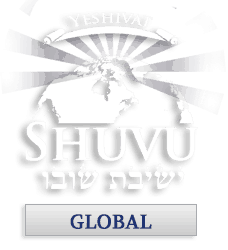For I am HaShem that brought you up out of the land of Egypt, to be your G-d; you shall therefore be holy, for I am holy. This is the law of the beast, and of the fowl, and of every living creature that moves in the waters, and of every creature that swarms upon the earth; to separate between the unclean and the clean, and between the living thing that may be eaten and the living thing that may not be eaten.
Lev 11:45-47
Parashat Shemini begins with the eight day completion of the Miluim, the installation of the Kohayns. It ends with the bulk of the laws of Kashrut. The last few verses of the parsha give us an incredible insight into all the mitzvot and their purpose.
The entire chapter to this point has been a listing of animals. We may eat some animals; we may not eat others. Animals that are clean and animals that are unclean. In other words, animals that may be considered food and animals that are not food. There are other rules of Kashrut in the Torah, for instance, do not eat blood, but in this parsha we are shown to do something else.
Verse 45 shows us that we are to be holy, kadosh, separated for Hashem. We are to be kadosh because Hashem is kadosh. Hashem is distinguished, separated from ordinary things. We are commanded to be the same. We are to be separated from ordinary things; that is, we are to separate Tuma and Tahara, the unclean and the clean. This is an extraordinary command for the children of Israel. If we ever question how we should be like God, here is the commandment. Be separate because Hashem is separate.
We are to separate between that which is clean, Tahara, and that which is unclean, Tuma. Torah continues by explaining what is meant in this particular case. There are animals we may eat, they are Tahara, and animals we may not eat, they are Tuma. The reason we must make this distinction is to be like Hashem. That is making a separation, a distinction, makes us like Hashem. It is this idea of separation, distinction, which is central to understanding the mitzvot.
The purpose of mitzvot is to create circumstances of separation. And in so doing, make us like Hashem. There are 613 mitzvot in the Torah. These mitzvot are given to Israel at Sinai, why? What could be the possible reason for giving Israel these commandments? Hashem explains in verse 45. Be kadosh because I am kadosh. This entire concept of separation is a theme throughout the Torah. The purpose of separation is to be like Hashem. We separate Shabbat from the other days, why? So that we may be like Hashem. We separate the leavened from the unleavened, why? So that we may be like Hashem. We separate certain animals that are food from other animals that are not food, why? So that we may be like Hashem. We separate linen and wool, why? So that we may be like Hashem. We separate milk and meat, why? So that we may be like Hashem. Following Hashem is to be separate. Many of the mitzvot, at initial inspection, do not make sense. In reality, the mitzvot are given to Israel not to make sense, rather to show Israel to be kadosh, separate. We may look for health benefits from doing certain mitzvot or other beneficial reasons for doing some of the mitzvot, but these concepts are fleeting and come and go with history. The real reason for the mitzvot is that Israel may be kadosh because Hashem is kadosh.
